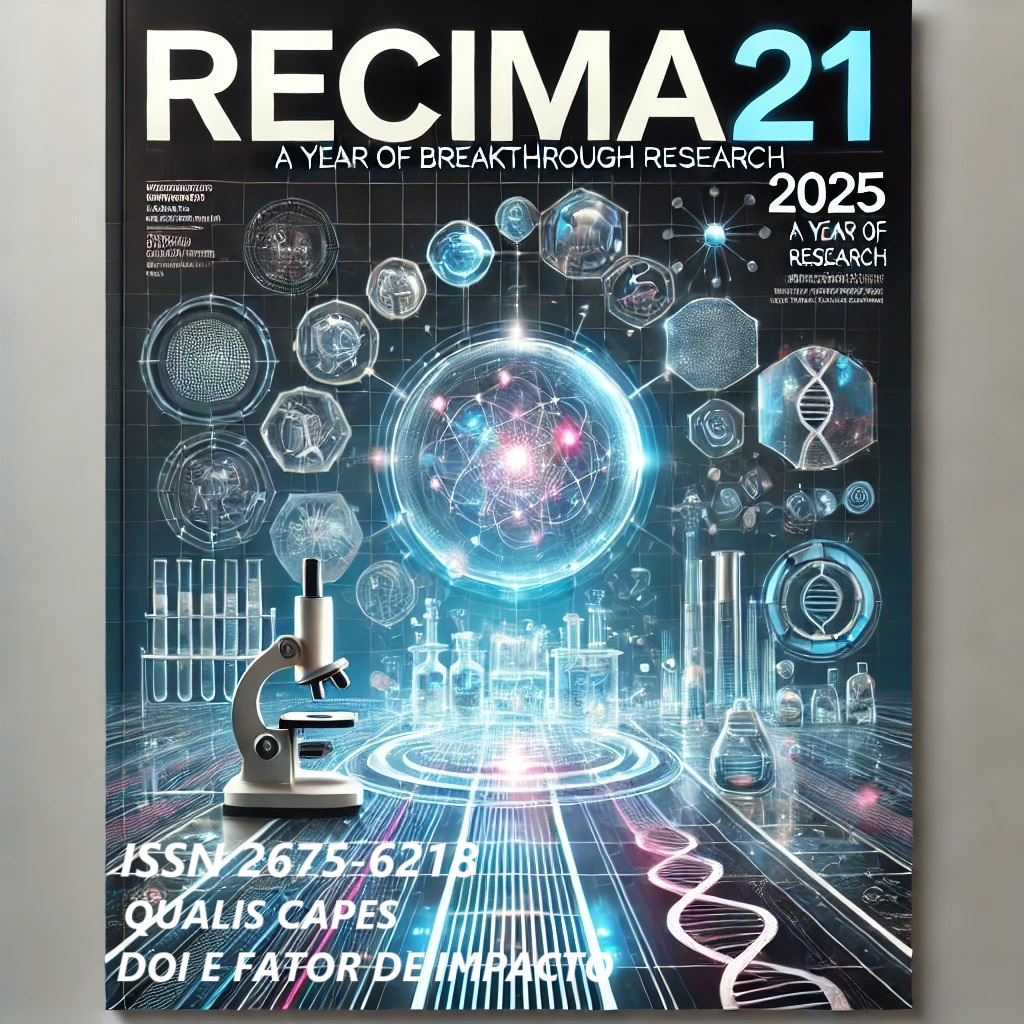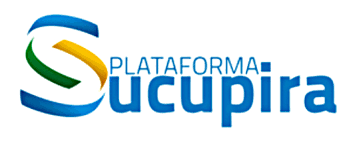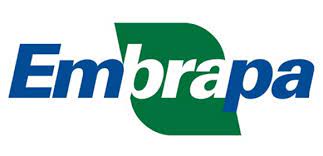SEGURIDAD EN ENTORNOS CON SUSTANCIAS QUÍMICAS PELIGROSAS:UNA REVISIÓN DE LITERATURA
DOI:
https://doi.org/10.47820/recima21.v6i2.6191Palabras clave:
Industria química. Accidentes. Protección. Seguridad. Sustancias químicas.Resumen
El manejo de sustancias químicas peligrosas en los entornos laborales representa riesgos significativos para la salud y la seguridad ocupacional, incluidos casos de intoxicación, explosiones y enfermedades graves. Estos riesgos afectan a una amplia gama de sectores, desde grandes industrias hasta laboratorios y servicios de salud. La exposición está asociada con altas tasas de mortalidad y enfermedades relacionadas con el trabajo, destacando la necesidad de estrategias eficaces para mitigar los riesgos. Revisar y mejorar tecnologías, normativas y mejores prácticas es crucial para fomentar entornos más seguros y sostenibles. Los datos recopilados de la literatura utilizando plataformas como PubMed, Scopus, SciELO y Google Scholar se emplearon para esta revisión narrativa. Las sustancias químicas representan riesgos ocupacionales significativos en sectores como la industria química, fábricas, laboratorios y agricultura, pudiendo causar intoxicaciones, enfermedades respiratorias y neoplasias. Las normativas nacionales e internacionales guían las medidas de seguridad, como el uso obligatorio de Equipos de Protección Personal (EPP) y Equipos de Protección Colectiva (EPC), esenciales para minimizar la exposición. Estas estrategias buscan proteger la salud de los trabajadores y prevenir accidentes en entornos con productos químicos peligrosos. Los avances en salud y seguridad ocupacional incluyen normativas más estrictas y tecnologías emergentes que ayudan a reducir accidentes y muertes. Innovaciones como monitoreo en tiempo real mejoran la protección, pero requieren capacitación especializada y gestión de riesgos, incluida la ciberseguridad. Además, los impactos del cambio climático y la contaminación refuerzan la urgencia de políticas públicas eficaces y educación continua, esenciales para garantizar entornos laborales seguros y sostenibles.
Descargas
Referencias
ABREU, N. L. et al. Mudanças de uso da terra e emissão de gases de efeito estufa: uma explanação sobre os principais drivers de emissão. Ciência Ambiente & Biologia, v. 47, p. 1-10, 2023. Disponível em: https://www.scielo.br/j/cab/a/NDzFnKKntQLXqGd3hF6mTnj/?format=pdf&lang=pt.
ADYANTHAYA, S.; JOSE, M. Quality and safety aspects in histopathology laboratory. Journal of Oral and Maxillofacial Pathology, v. 17, n. 3, p. 402-407, 2013. DOI: 10.4103/0973-029X.125207. DOI: https://doi.org/10.4103/0973-029X.125207
AMERICAN INSTITUTE OF CHEMICAL ENGINEERS. Essential Practices for Managing Chemical Reactivity Hazards. New York: Wiley, 2023.
ARANTES, M. V. C.; GUNTER, W. M. R. Boas práticas sustentáveis de gestão de resíduos químicos em instituições públicas de ensino superior. Química Nova, v. 46, n. 7, p. 724-730, 2023. DOI: 10.21577/0100-4042.20230034. DOI: https://doi.org/10.21577/0100-4042.20230034
ARMSTRONG, V.; KARYAKINA, N. A.; NORDHEIM, E.; ARNOLD, I.; KREWSKI, D. Overview of REACH: Issues Involved in the Registration of Metals. Neurotoxicology, v. 83, p. 186-198, 2021. DOI: 10.1016/j.neuro.2020.01.010. DOI: https://doi.org/10.1016/j.neuro.2020.01.010
ASGEDOM, A. A.; BRÅTVEIT, M.; MOEN, B. E. Knowledge, attitude and practice related to chemical hazards and personal protective equipment among particleboard workers in Ethiopia: a cross-sectional study. BMC Public Health, v. 19, n. 1, p. 440, 2019. DOI: 10.1186/s12889-019-6807-0. DOI: https://doi.org/10.1186/s12889-019-6807-0
BEGEMANN, K.; GLASER, N.; DESEL, H. Vergiftungen durch chemische Stoffe und Produkte [Poisoning by chemical substances and products]. Bundesgesundheitsblatt Gesundheitsforschung Gesundheitsschutz, v. 62, n. 11, p. 1346-1353, 2019. DOI: 10.1007/s00103-019-03033-6. DOI: https://doi.org/10.1007/s00103-019-03033-6
BIERMANN, F. Earth system governance: World politics in the post-environmental age. [S. l.: s. n.], 2023. Disponível em: https://dspace.library.uu.nl/bitstream/handle/1874/426832/10.4324_9781003008873_25_chapterpdf.pdf?sequence=1. DOI: 10.4324/9781003008873-25. DOI: https://doi.org/10.4324/9781003008873-25
BOSTAN, I. Harmonisation of standards related to limiting chemical risk associated with work processes. Annals of Agricultural and Environmental Medicine, v. 20, n. 3, p. 460-464, 2013.
BRASIL. Ministério do Trabalho. Norma Regulamentadora nº 26: Sinalização de Segurança. Brasília: Ministério do Trabalho, 2021.
CARDER, M.; SEED, M. J.; MONEY, A.; AGIUS, R. M.; VAN TONGEREN, M. Occupational and work-related respiratory disease attributed to cleaning products. Occupational and Environmental Medicine, v. 76, n. 8, p. 530-536, 2019. DOI: 10.1136/oemed-2018-105646. DOI: https://doi.org/10.1136/oemed-2018-105646
CHEDIK, L.; BAYBEKOV, S.; COSNIER, F.; MARCOU, G.; VARNEK, A.; CHAMPMARTIN, C. An update of skin permeability data based on a systematic review of recent research. Scientific Data, v. 11, n. 1, p. 224, 2024. DOI: 10.1038/s41597-024-03026-4. DOI: https://doi.org/10.1038/s41597-024-03026-4
CRUZ, L. E.; SANTOS, V. M. Técnicas adequadas de descarte de resíduos biológicos e químicos. Braz J Implant Health Sci., v. 6, n. 11, p. 1200-1219, 2024. Disponível em: https://bjihs.emnuvens.com.br/bjihs/article/view/3966. DOI: https://doi.org/10.36557/2674-8169.2024v6n11p1200-1219
DAMALAS, C. A.; ELEFTHEROHORINOS, I. G. Pesticide exposure, safety issues, and risk assessment indicators. International Journal of Environmental Research and Public Health, v. 8, n. 5, p. 1402-1419, 2011. DOI: 10.3390/ijerph8051402. DOI: https://doi.org/10.3390/ijerph8051402
DHARA, V. R. Investigating the Medical Aspects of the World's Worst Industrial Disaster. New Solutions, v. 33, n. 2-3, p. 113-118, 2023. DOI: 10.1177/10482911231190583. DOI: https://doi.org/10.1177/10482911231190583
ELGABRY, M. Rumo à biossegurança cibernética por design: uma abordagem experimental para o design e desenvolvimento da Internet das Coisas Médicas. Crime Science, v. 12, p. 3, 2023. DOI: 10.1186/s40163-023-00181-8. Disponível em: https://doi.org/10.1186/s40163-023-00181-8. DOI: https://doi.org/10.1186/s40163-023-00181-8
EUROPEAN CHEMICALS AGENCY (ECHA). CLP Regulation: Training material on classification of mixtures under the CLP Regulation [Internet]. 2014 May 19-20. Available from: https://www.reach-metals.eu/uploads/pdf/clp/training-.
EUROPEAN PARLIAMENT. Regulation (EC) No 1907/2006 of the European Parliament and of the Council. REACH Regulation. Official Journal of the European Union, 2023. Available from: https://eur-lex.europa.eu/.
FEVRE, M. C.; VINCENT, C.; PICARD, J.; VIGHETTI, A.; CHAPUIS, C.; DETAVERNIER, M.; ALLENET, B.; PAYEN, J. F.; BOSSON, J. L.; ALBALADEJO, P. Reduced variability and execution time to reach a target with a needle GPS system: Comparison between physicians, residents and nurse anaesthetists. Anaesthesia, Critical Care & Pain Medicine, v. 37, n. 1, p. 55-60, 2018. DOI: 10.1016/j.accpm.2016.05.008. DOI: https://doi.org/10.1016/j.accpm.2016.05.008
FIOCRUZ. Biossegurança e bioproteção, atuação da Fiocruz na qualidade e segurança das pesquisas e de atividades envolvendo agentes biológicos. Rio de Janeiro: Fiocruz, s. d. Disponível em: https://portal.fiocruz.br/sites/portal.fiocruz.br/files/documentos_2/folder_ctbio_web_versao.pdf.
FLOR-UNDA, O.; FUENTES, M.; DÁVILA, D.; RIVERA, M.; LLANO, G.; IZURIETA, C.; ACOSTA-VARGAS, P. Innovative Technologies for Occupational Health and Safety: A Scoping Review. Safety, v. 9, n. 2, p. 35, 2023. Available from: https://doi.org/10.3390/safety9020035. DOI: https://doi.org/10.3390/safety9020035
GARRALAGA, M. P.; LOMBA, L.; ZURIAGA, E.; SANTANDER, S.; GINER, B. Key Properties for the Toxicity Classification of Chemicals: A Comparison of the REACH Regulation and Scientific Studies Trends Applied Sciences, v. 12, n. 21, p. 11710, 2022. DOI: 10.3390/app122211710. DOI: https://doi.org/10.3390/app122211710
GENG, X.; LV, Y.; ZHAO, L.; WANG, Y. Measurement and Simulation of Risk Coupling in Port Hazardous Chemical Logistics. International Journal of Environmental Research and Public Health, v. 20, n. 5, p. 4008, 2023. DOI: 10.3390/ijerph20054008. DOI: https://doi.org/10.3390/ijerph20054008
GUSEVA CANU, I.; FAUST, S.; CANIONI, P.; COLLOMB, P.; SAMSON, E.; LAURIER, D. Attitude towards personal protective equipment in the French nuclear fuel industry. Arhiv za Higijenu Rada i Toksikologiju, v. 64, n. 2, p. 99-107, 2013. DOI: 10.2478/10004-1254-64-2013-2289. DOI: https://doi.org/10.2478/10004-1254-64-2013-2289
HE, Z.; WENG, W. Synergic effects in the assessment of multi-hazard coupling disasters: Fires, explosions, and toxicant leaks. Journal of Hazardous Materials, v. 388, p. 121813, 2020. DOI: 10.1016/j.jhazmat.2019.121813. DOI: https://doi.org/10.1016/j.jhazmat.2019.121813
HRVAT, N. M.; KOVARIK, Z. Counteracting poisoning with chemical warfare nerve agents. Arhiv za Higijenu Rada i Toksikologiju, v. 71, n. 4, p. 266-284, dez. 2020. DOI: 10.2478/aiht-2020-71-3459. DOI: https://doi.org/10.2478/aiht-2020-71-3459
HULME, P. E. et al. Emerging advances in biosecurity to underpin human, animal, plant, and ecosystem health. iScience, v. 26, n. 9, p. 107462, jul. 2023. DOI: 10.1016/j.isci.2023.107462. Disponível em: https://doi.org/10.1016/j.isci.2023.107462. DOI: https://doi.org/10.1016/j.isci.2023.107462
ICHIHARA, G.; MATSUKAWA, T.; KITAMURA, F.; YOKOYAMA, K. Risk factors for occupational accidents in agricultural enterprises in Japan. Industrial Health, v. 57, n. 5, p. 627-636, 2019. DOI: 10.2486/indhealth.2017-0218. DOI: https://doi.org/10.2486/indhealth.2017-0218
KANG, S. K.; KIM, E. A. Occupational diseases in Korea. Journal of Korean Medical Science, v. 25, supl., p. S4-S12, 2010. DOI: 10.3346/jkms.2010.25.S.S4. DOI: https://doi.org/10.3346/jkms.2010.25.S.S4
KEZIC, S.; NUNEZ, R.; BABIĆ, Ž.; HALLMANN, S.; HAVMOSE, M. S.; JOHANSEN, J. D.; JOHN, S. M.; MACAN, M.; SYMANZIK, C.; UTER, W.; WEINERT, P.; TURK, R.; MACAN, J.; VAN DER MOLEN, H. F. Occupational exposure of hairdressers to airborne hazardous chemicals: A scoping review. International Journal of Environmental Research and Public Health, v. 19, n. 7, p. 4176, 2022. DOI: 10.3390/ijerph19074176. DOI: https://doi.org/10.3390/ijerph19074176
KLITZKE, E. F.; KETZER, F.; ALMEIDA, M. O. P.; CALISTO, J. F. F.; WANCURA, J. H. C.; RODRIGUES, C. A.; OLIVEIRA, J. V.; DAL MAGRO, J. Adsorption of methane by modified-biochar aiming to improve the gaseous fuels storage/transport capacity: process evaluation and modeling. Environmental Science and Pollution Research International, v. 31, n. 36, p. 49285-49299, ago. 2024. DOI: 10.1007/s11356-024-34465-6. DOI: https://doi.org/10.1007/s11356-024-34465-6
KRZEMIŃSKA, S.; IRZMAŃSKA, E. Zagrożenie olejami mineralnymi na stanowiskach pracy oraz nowe rozwiązania polimerowych materiałów ochronnych w wybranych środkach ochrony indywidualnej [Exposure to mineral oils at worksites and novel solutions for polymer protective materials in selected personal protective equipment]. Medycyna Pracy, v. 62, n. 4, p. 435-443, 2011.
KWON, S. C.; ROH, S. Y.; LEE, J. H.; KIM, E. A. Compensation for occupational diseases by chemical agents in Korea. Journal of Korean Medical Science, v. 29, supl., p. S78-S84, 2014. DOI: 10.3346/jkms.2014.29.S.S78. DOI: https://doi.org/10.3346/jkms.2014.29.S.S78
LAMICHHANE, Bishal; NEUPANE, Navaraj. Improved Healthcare Access in Low-resource Regions: A Review of Technological Solutions. [S. l.: s. n.], 2022. Disponível em: https://doi.org/10.48550/arXiv.2205.10913.
LESO, V.; FONTANA, L.; IAVICOLI, I. Technological innovation in occupational safety and health: A focus on Industry 5.0. International Journal of Environmental Research and Public Health, v. 20, n. 10, p. 1368, 2023. DOI: 10.3390/ijerph20101368.
LEVEL ONE SOLUTIONS. NR26: Sinalização de segurança e identificação de produtos químicos. [S. l.]: Level One Solutions, 2023. Disponível em: https://levelonesolutions.com.br/nr26-sinalizacao-de-seguranca-e-identificacao-de-produtos-quimicos/. Acesso em: 5 dez. 2024.
LÓPEZ-RODRÍGUEZ, J. D.; RÍOS-CASTILLO, R. Emerging issues in regulatory science and technology. Journal of Regulatory Science, v. 15, n. 4, p. 35-45, 2021.
MACHADO, M. H. et al. Condições de trabalho e biossegurança dos profissionais de saúde e trabalhadores invisíveis da saúde no contexto da COVID-19 no Brasil. Ciência & Saúde Coletiva, v. 28, n. 10, p. 2809–2822, 2023. DOI: 10.1590/1413-812320232810.10072023. Disponível em: https://doi.org/10.1590/1413-812320232810.10072023. DOI: https://doi.org/10.1590/1413-812320232810.10072023
MAFFINI, M. V.; RAYASAM, S. D. G.; AXELRAD, D. A.; et al. Advancing the science on chemical classes. Environmental Health, v. 21, supl. 1, p. 120, 2023. DOI: 10.1186/s12940-022-00919-y. DOI: https://doi.org/10.1186/s12940-022-00919-y
MASSOUBRE, B. Les risques chimiques au laboratoire de biologie médicale [Chemical risks in the medical biology laboratory]. Annales de Biologie Clinique (Paris), v. 81, n. 4, p. 356-364, 2023. DOI: 10.1684/abc.2023.1823. DOI: https://doi.org/10.1684/abc.2023.1823
McCORD, G. C.; BHARADWAJ, P.; McDOUGAL, L.; KAUSHIK, A.; RAJ, A. Long-term health and human capital effects of in utero exposure to an industrial disaster: a spatial difference-in-differences analysis of the Bhopal gas tragedy. BMJ Open, v. 13, n. 6, e066733, 2023. DOI: 10.1136/bmjopen-2022-066733. DOI: https://doi.org/10.1136/bmjopen-2022-066733
McGEOUGH, C. P.; MEAR, S. J.; JAMISON, T. F. A Call for Increased Focus on Reproductive Health within Lab Safety Culture. Journal of the American Chemical Society, v. 143, n. 32, p. 12422-12427, 2021. DOI: 10.1021/jacs.1c03725. DOI: https://doi.org/10.1021/jacs.1c03725
MINISTÉRIO DO TRABALHO. Norma Regulamentadora NR-26: Sinalização de Segurança. Brasilia: Ministério do Trabalho, 2020.
MÖCKEL, L.; MOHAMMADI, H.; FARHANG DEHGHAN, S. Editorial: The use of emerging technologies in occupational health and safety, volume II. Safety, v. 9, n. 6, p. 100, 2023. Available from: https://doi.org/10.3390/safety9060100. DOI: https://doi.org/10.3389/fpubh.2023.1200044
MOROVÁ, M.; KRŠKOVÁ, L. Autistic-like traits in laboratory rodents exposed to phthalic acid esters during early development - an animal model of autism? Physiological Research, v. 70, n. 3, p. 345-361, 2021. DOI: 10.33549/physiolres.934570. DOI: https://doi.org/10.33549/physiolres.934570
NASTASIA, I.; RIVES, R. Successful Strategies for Occupational Health and Safety in Small and Medium Enterprises: Insights for a Sustainable Return to Work. J Occup Rehabil, 1 dec. 2024. doi: 10.1007/s10926-024-10255-2. Epub ahead of print. PMID: 39616561. DOI: https://doi.org/10.1007/s10926-024-10255-2
OLIVEIRA, S. G. de. Estrutura normativa da segurança e saúde do trabalhador no Brasil. [S. l.: s. n.], 2023. Disponível em: https://www.trt3.jus.br/escola/download/revista/rev_75/Sebastiao_Oliveira.pdf.
ORGANIZAÇÃO INTERNACIONAL DO TRABALHO (OIT). [Internet]. Disponível em: https://www.ilo.org/pt-pt/resource/news/omsoit-quase-2-milh%C3%B5es-de-pessoas-morrem-cada-ano-de-causas-relacionadas-ao.
PAT, Y.; YAZICI, D.; D’AVINO, P.; LI, M.; ARDICLI, S.; ARDICLI, O.; MITAMURA, Y.; AKDIS, M.; DHIR, R.; NADEAU, K.; AGACHE, I.; OGULUR, I.; AKDIS, C. A. Recent advances in the epithelial barrier theory. International Immunology, v. 36, n. 5, p. 211-222, 2024. DOI: 10.1093/intimm/dxae002. DOI: https://doi.org/10.1093/intimm/dxae002
PETROPOULOU, P.; ARTOPOULOU, I.; KALEMIKERAKIS, I.; GOVINA, O. Environment and Public Health: Air Pollution and Chronic Diseases. Environmental Sciences Proceedings, v. 26, n. 1, p. 118, 2023. Available from: https://doi.org/10.3390/environsciproc2023026118. DOI: https://doi.org/10.3390/environsciproc2023026118
PIGINI, D.; PACI, E.; GUGLIELMETTI, R.; TRANFO, G.; SPAGNOLI, M.; FETONI, A.; TRICARICO, L.; SISTO, R. Oxidative stress in occupational exposure to styrene vapors and dangerous chemicals in the shipbuilding industry. Frontiers in Toxicology, v. 5, 1319896, 2023. DOI: 10.3389/ftox.2023.1319896. DOI: https://doi.org/10.3389/ftox.2023.1319896
QU, F.; ZHENG, W. Cadmium Exposure: Mechanisms and Pathways of Toxicity and Implications for Human Health. Toxics, v. 12, n. 6, p. 388, 2024. DOI: 10.3390/toxics12060388. DOI: https://doi.org/10.3390/toxics12060388
ROIO, L. C. D.; MIZUTANI, R. F.; PINTO, R. C.; TERRA-FILHO, M.; SANTOS, U. P. Work-related asthma. Jornal Brasileiro de Pneumologia, v. 47, n. 4, e20200577, 2021. DOI: 10.36416/1806-3756/e20200577. DOI: https://doi.org/10.36416/1806-3756/e20200577
SANTOS, J. A.; SILVA, R. M.; OLIVEIRA, T. P. Exposição a agrotóxicos e agravos à saúde em trabalhadores agrícolas: uma revisão sistemática. Revista Brasileira de Saúde Ocupacional, v. 49, n. 1, e20240012, 2024. Disponível em: https://www.scielo.br/j/rbso/a/VTYRcySbwJvfYqZyByRYQxD/. Acesso em: 9 fev. 2025.
SELOV, A. V.; AKIN'SHIN, A. V.; SUROVTSV, N. A.; LUKICHEVA, T. A. Sredstva individual'noĭ zashchity pri likvidatsii posledstviĭ avariĭ na khimicheskikh predpriiatiiakh [Means of individual protection in cleaning-up consequences of accidents at chemical industries]. Meditsina Truda i Promyshlennaia Ekologiia, n. 7, p. 36-39, 1995.
SHIMASAKI, N.; SHINOHARA, K.; MORIKAWA, H. Performance of materials used for biological personal protective equipment against blood splash penetration. Industrial Health, v. 55, n. 6, p. 521-528, 2017. DOI: 10.2486/indhealth.2017-0120. DOI: https://doi.org/10.2486/indhealth.2017-0120
SILVA, A. G.; OLIVEIRA, M. C.; SOUZA, R. F. Corrosão do aço-carbono: uma abordagem do cotidiano no ensino de química. Química Nova, v. 43, n. 9, p. 1190-1198, 2020. Disponível em: https://www.scielo.br/j/qn/a/cVwbpdPmGzTFrGCBFsc368M/.
SKOWROŃ, J.; CZERCZAK, S. Rules and recent trends for setting health-based occupational exposure limits for chemicals. International Journal of Occupational Medicine and Environmental Health, v. 28, n. 2, p. 243-252, 2015. DOI: 10.13075/ijomeh.1896.00243. DOI: https://doi.org/10.13075/ijomeh.1896.00243
SKOWROŃ, J.; KONIECZKO, K. Narażenie zawodowe na związki chromu(VI) [Occupational exposure to chromium(VI) compounds]. Medycyna Pracy, v. 66, n. 3, p. 407-427, 2015. DOI: 10.13075/mp.5893.00200. DOI: https://doi.org/10.13075/mp.5893.00200
SLIWINSKA-KOWALSKA, M. Hearing. Handbook of Clinical Neurology, v. 131, p. 341-363, 2015. DOI: 10.1016/B978-0-444-62627-1.00018-4. DOI: https://doi.org/10.1016/B978-0-444-62627-1.00018-4
SOUZA, F. S. et al. Desafios de aplicação das normas de saúde e segurança no ambiente de trabalho. [S. l.: s. n.], 2023. Disponível em: file:///C:/Users/letic/Downloads/[52]-DESAFIOS+DE+APLICA%C3%87%C3%83O+DAS+NORMAS+DE+SA%C3%9ADE+E+SEGURAN%C3%87A+NO+AMBIENTE+DE+TRABALHO.pdf.
SOUZA, Rayhany Kelly de; GONÇALVES, Natália; SILVA, Thiago Lopes; ECHEVARRIA-GUANILO, Maria Elena. Equipamentos de proteção individual na assistência hospitalar de enfermagem: revisão de escopo. Texto & Contexto Enfermagem, v. 31, e20210421, 2022. Disponível em: https://doi.org/10.1590/1980-265X-TCE-2021-0421pt. DOI: https://doi.org/10.1590/1980-265x-tce-2021-0421pt
SUNDAS, A.; CONTRERAS, I.; MUJAHID, O.; BENEYTO, A.; VEHI, J. The Effects of Environmental Factors on General Human Health: A Scoping Review. Healthcare, v. 12, n. 21, p. 2123, 2024. DOI: 10.3390/healthcare12212123. DOI: https://doi.org/10.3390/healthcare12212123
U.S. DEPARTMENT OF LABOR. Occupational Safety and Health Administration (OSHA): Regulations (Standards - 29 CFR) [Internet]. 2022. Available from: https://www.osha.gov/.
UNITED NATIONS. UN Model. Recommendations on the transport of dangerous goods, v. 23, 2023. ISSN 1014-5753.
VAN WELY, E. Current global standards for chemical protective clothing: how to choose the right protection for the right job? Industrial Health, v. 55, n. 6, p. 485-499, 2017. DOI: 10.2486/indhealth.2017-0124. DOI: https://doi.org/10.2486/indhealth.2017-0124
WALLAU, W. M.; SANTOS JÚNIOR, J. A. dos. O sistema globalmente harmonizado de classificação e rotulagem de produtos químicos (GHS): uma introdução para sua aplicação em laboratórios de ensino e pesquisa acadêmica. Química Nova, v. 36, n. 4, p. 607-617, 2013. DOI: 10.1590/S0100-40422013000400021. DOI: https://doi.org/10.1590/S0100-40422013000400021
WAN ROZITA WAN MAHIYUDDIN, N.; ISMAIL, R.; MOHAMMAD SHAM, N.; AHMAD, N. I.; NIK MUHAMMAD NIZAM NIK HASSAN. Cardiovascular and Respiratory Health Effects of Fine Particulate Matters (PM2.5): A Review on Time Series Studies. Atmosphere, v. 14, n. 5, p. 856, 2023. Available from: https://doi.org/10.3390/atmos14050856. DOI: https://doi.org/10.3390/atmos14050856
WILLE, T.; STEINRITZ, D.; WOREK, F.; THIERMANN, H. Vergiftungen durch chemische Kampfstoffe [Chemical warfare agent poisoning]. Bundesgesundheitsblatt Gesundheitsforschung Gesundheitsschutz, v. 62, n. 11, p. 1370-1377, 2019. DOI: 10.1007/s00103-019-03035-4. DOI: https://doi.org/10.1007/s00103-019-03035-4
WYKE, S.; PEÑA-FERNÁNDEZ, A.; BROOKE, N.; DUARTE-DAVIDSON, R. The importance of evaluating the physicochemical and toxicological properties of a contaminant for remediating environments affected by chemical incidents. Environment International, v. 72, p. 109-118, nov. 2014. DOI: 10.1016/j.envint.2014.05.002. DOI: https://doi.org/10.1016/j.envint.2014.05.002
YOU, E.; KOZMINSKI, K. G. Biosecurity in the age of Big Data: a conversation with the FBI. Molecular Biology of the Cell, v. 26, n. 22, p. 3894-3897, nov. 2015. DOI: 10.1091/mbc.E14-01-0027. Disponível em: https://doi.org/10.1091/mbc.E14-01-0027. DOI: https://doi.org/10.1091/mbc.E14-01-0027
ZHANG, Chao; ZHANG, Hanxin; KHAN, Atif; KIM, Ted; OMOLEYE, Olasubomi; ABIONA, Oluwamayomikun; LEHMAN, Amy; OLOPADE, Christopher O.; OLOPADE, Olufunmilayo I.; LOPES, Pedro; RZHETSKY, Andrey. Lightweight Mobile Automated Assistant-to-physician for Global Lower-resource Areas. [S. l.: s. n.], 2021. Disponível em: https://doi.org/10.48550/arXiv.2110.15127. DOI: https://doi.org/10.1101/2021.11.01.21265487
ZHOU, D. et al. Biosafety and biosecurity. Journal of Biosafety and Biosecurity, v. 1, n. 1, p. 15-18, mar. 2019. DOI: 10.1016/j.jobb.2019.01.001. Epub 20 fev. 2019. Disponível em: https://doi.org/10.1016/j.jobb.2019.01.001. DOI: https://doi.org/10.1016/j.jobb.2019.01.001
Descargas
Publicado
Número
Sección
Categorías
Licencia
Derechos de autor 2025 RECIMA21 - Revista Científica Multidisciplinar - ISSN 2675-6218

Esta obra está bajo una licencia internacional Creative Commons Atribución 4.0.
Os direitos autorais dos artigos/resenhas/TCCs publicados pertecem à revista RECIMA21, e seguem o padrão Creative Commons (CC BY 4.0), permitindo a cópia ou reprodução, desde que cite a fonte e respeite os direitos dos autores e contenham menção aos mesmos nos créditos. Toda e qualquer obra publicada na revista, seu conteúdo é de responsabilidade dos autores, cabendo a RECIMA21 apenas ser o veículo de divulgação, seguindo os padrões nacionais e internacionais de publicação.













